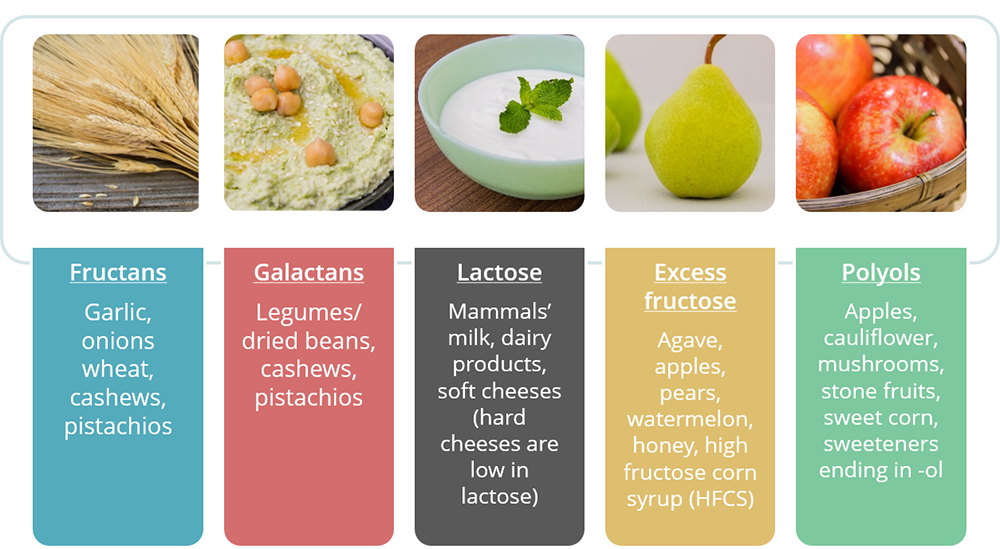FODMAP Intolerance
Get TestedFODMAP Intolerance
FODMAP stands for Fermentable Oligosaccharides, Disaccharides, Monosaccharides, and Polyols. These are a group of carbohydrates that resist digestion and absorption. Since they are poorly digested or absorbed, they are available to be digested or fermented by gastrointestinal (GI) bacteria and may cause bloating and gas as a result of fermentation. They may also draw water into the intestines, which may cause bloating and diarrhea. Typically, those who are intolerant to FODMAPs will experience gas, bloating, abdominal pain, cramping, belching, reflux, fatigue, constipation and/or diarrhea within 3-8 hours of consuming high FODMAP foods.
Controlled studies and trials have determined that FODMAPs increase symptoms in most individuals with IBS, while avoiding or limiting these carbohydrates improves symptoms. Several research studies support the use of the low FODMAP plan in patients with IBS and other GI disorders. In addition to helping those with IBS, a low FODMAP eating pattern may also help improve symptoms in those with small intestinal bacterial overgrowth (SIBO), and inflammatory bowel diseases (IBD) such as Crohn’s disease or ulcerative colitis.
FODMAPs are found in fruits, vegetables, grains, legumes, dairy products, and some sweeteners. In addition, some foods may contain more than one FODMAP.
FODMAP Oligosaccharides include fructans (fructo-oligosaccharides “FOS”), galactans (galacto-oligosaccharides “GOS”), all of which are found in certain fruits, vegetables, legumes, nuts, and grains. They are also present in inulin fiber sources such as chicory root.
FODMAP Disaccharides refer to lactose, which is the sugar found in cow, goat, and sheep milk. The disaccharide sucrose is not a high FODMAP ingredient, although it would be best to limit it for other reasons.
FODMAP Monosaccharides refer to excess fructose, a simple sugar found in fruits and certain sweeteners. When fructose is consumed in large doses by itself, it may not be fully absorbed.
FODMAP Polyols are sugar alcohols that occur naturally in fruits and vegetables; they are not completely digested/absorbed and can cause GI distress. They are used as reduced-calorie sweeteners and are often found in sugar-free foods, gums, and candies.
Some Common Food Sources of FODMAPs

The Role of Food Sensitivities
A low FODMAP eating plan may reduce symptoms as a short-term strategy, but it is not customized to the individual or meant to be a permanent lifestyle change. It is important to identify other foods and other mechanisms of actions that may be underlying GI symptomatology. Some individuals may need to eliminate other “culprit” foods identified by food sensitivity testing.
Learn more about food sensitivities and the Alcat Test by visiting us here.
Receive our FODMAP Fact Sheet!
Sign up for our newsletter and receive a complimentary FODMAP Fact Sheet that includes a complete list of high FODMAP foods and the 5R protocol we use with our clients.
